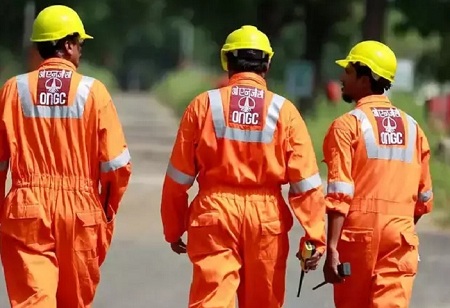Oil and Natural Gas Corporation's delayed Krishna Godavari basin KG-D5 project would likely start crude oil production in May and gas output a year later. ONGC was originally to start gas production from Cluster-II fields in block KG-DWN-98/2 (KG-D5) in June 2019, and the first oil was to flow in March 2020.
The company blamed contracting and supply chain issues due to the pandemic for shifting the start of oil production to November 2021, the third quarter of 2022, and now to May 2023. The gas output start target was revised to May 2021, then to May 2023, and now to May 2024. ONGC Director (production) Pankaj Kumar said a floating production unit, FPSO, which will be used to produce oil, is already in Indian waters. "We estimate oil production should start in May," he said.
The block is currently producing 1.7 million standard cubic meters per day of natural gas. "We will start with 10,000 to 12,000 barrels per day and
reach the peak of 45,000 bpd in 2-3 months," he said adding some 2 mmscmd of gas would also flow with oil but actual gas output will start in May 2024 when 7-8 mmscmd production is expected.
The production estimates are however much lower than what was originally projected. At the time of its launch in April 2018, ONGC had said the estimated capital expenditure would be USD 5.07 billion and operational expenditure would be USD 5.12 billion over a field life of 16 years. Kumar said the company hopes to arrest the decline in crude oil production in the next fiscal while natural gas output is likely to see a rise.
ONGC's KG-DWN-98/2 or KG-D5 block, which sits next to Reliance Industries' KG-D6 block in the KG basin, has a number of discoveries that have been clubbed into clusters. It is situated offshore the Godavari river delta in the Bay of Bengal. It is located 35-km off the coast of Andhra Pradesh in water depths ranging from 300-3,200 metres.
The discoveries in the block are divided into three clusters Cluster-1, 2, and 3. Cluster 2 is being put into production first. Cluster 2 field is divided into two blocks, namely 2A and 2B, which, per the original investment decision, were expected to produce 23.52 million metric tonne of oil and 50.70 billion cubic meters (bcm) of gas over the life of the field. Cluster 2A was estimated to contain 94.26 million tonne of crude oil reserves and 21.75 bcm of associated gas, while Cluster 2B is estimated to host 51.98 bcm of gas reserves.
Cluster 2A was anticipated to produce 77,305 barrels of oil per day (bopd) and associated gas at 3.81 million metric standard cubic meters per day (mmscmd) over 15 years. Cluster 2B is expected to produce free gas of 12.75 mmscmd from eight wells and has a 16-year life. But now the output estimate is lower - 45,000 bpd of oil and up to 2.5 mmscmd from Cluster 2A and around 9 mmscmd from Cluster 2B.
